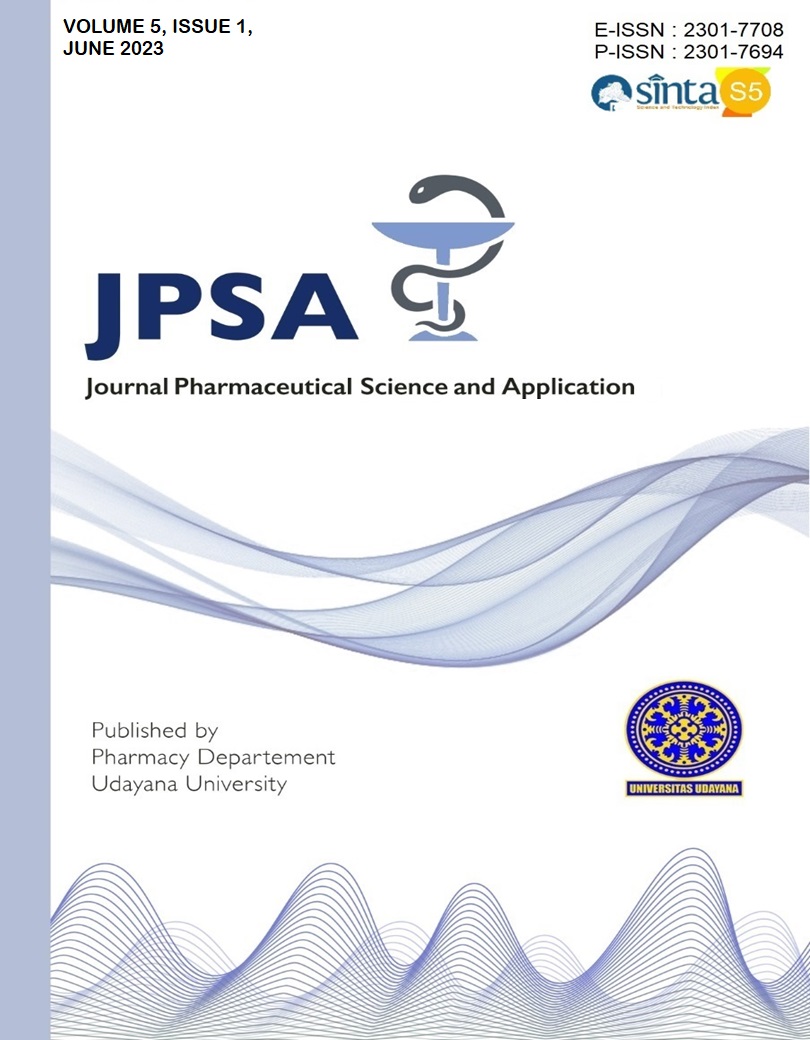PRODUCTION OF HUPERZINE A BY FUNGAL ENDOPHYTES ASSOCIATED WITH HUPERZIACEAE PLANTS
Abstract
Background: Endophytic fungi are known as a producer of a myriad of bioactive natural products, including those originally produced by the host plants. Huperzine A (Hup A), a lycopodium alkaloid, which was reported as an active acetylcholinesterase inhibitor (AChEI) agent used for the treatment of Alzheimer’s disease, was originally isolated from medicinal Chinese herbs Huperzia serrata. Moreover, various species of endophytic fungi associated with H. serrata and other species within Huperziaceae plants were found capable of producing Hup A, suggesting these microorganisms as promising sources of Hup A. Objective: This review aimed to summarize the evidence of Hup A produced by various endophytic fungi as part of efforts to assess alternative producer of Hup A. Methods: Scientific articles on endophytic fungi producing Hup A published from 2000 until 2022 were screened through scientific databases. Results: Thirty-two endophytic fungal strains belonging to fifteen fungal genera were documented as capable of producing Hup A. These fungal endophytes were isolated from Huperziaceae plants, H. serrata, Phlegmariurus phlegmaria and Phlegmariurus taxifolius. Conclusion: We summarize herein the capability of endophytic fungal strains associated with Huperziaceae plants to produce Hup A, an active AChEI agent, which could be considered as an alternative producer of Hup A on a larger scale.
Keywords: Acetylcholinesterase inhibitor (AChEI); Alzheimer’s disease; Fungal endophytes; Huperziaceae; Huperzine A (Hup A).
Downloads

This work is licensed under a Creative Commons Attribution 4.0 International License.
Authors who publish with this journal agree to the following terms:
Authors retain copyright and grant the journal right of first publication with the work simultaneously licensed under a Creative Commons Attribution License that allows others to share the work with an acknowledgment of the work's authorship and initial publication in this journal.
Authors are able to enter into separate, additional contractual arrangements for the non-exclusive distribution of the journal's published version of the work (e.g., post it to an institutional repository or publish it in a book), with an acknowledgment of its initial publication in this journal.
Authors are permitted and encouraged to post their work online (e.g., in institutional repositories or on their website) prior to and during the submission process, as it can lead to productive exchanges, as well as earlier and greater citation of published work. (See The Effect of Open Access).

This work is licensed under a Creative Commons Attribution 4.0 International License.


 HOME
HOME
















